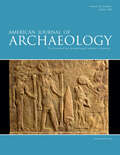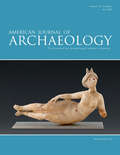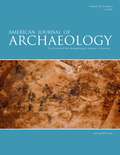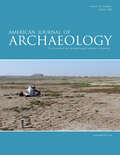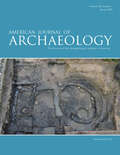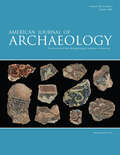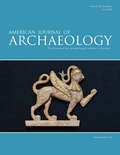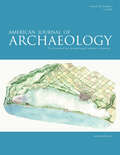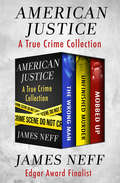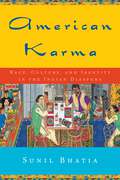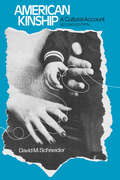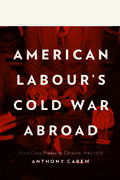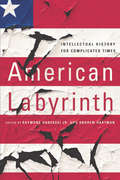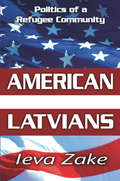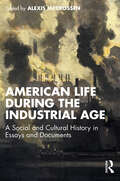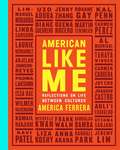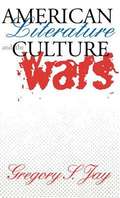- Table View
- List View
American Journal of Archaeology, volume 126 number 3 (July 2022)
by American Journal of ArchaeologyThis is volume 126 issue 3 of American Journal of Archaeology. The American Journal of Archaeology, the journal of the Archaeological Institute of America, was founded in 1885 and is one of the world's most distinguished and widely distributed peer-reviewed archaeological journals. The AJA reaches more than 40 countries and approximately 700 universities, learned societies, departments of antiquities, and museums. The AJA publishes original research on the diverse peoples and material cultures of the Mediterranean and related areas, including North Africa (with Egypt and Sudan), Western Asia (with the Caucasus), and Europe, from prehistory through late antiquity.
American Journal of Archaeology, volume 126 number 4 (October 2022)
by American Journal of ArchaeologyThis is volume 126 issue 4 of American Journal of Archaeology. The American Journal of Archaeology, the journal of the Archaeological Institute of America, was founded in 1885 and is one of the world's most distinguished and widely distributed peer-reviewed archaeological journals. The AJA reaches more than 40 countries and approximately 700 universities, learned societies, departments of antiquities, and museums. The AJA publishes original research on the diverse peoples and material cultures of the Mediterranean and related areas, including North Africa (with Egypt and Sudan), Western Asia (with the Caucasus), and Europe, from prehistory through late antiquity.
American Journal of Archaeology, volume 127 number 1 (January 2023)
by American Journal of ArchaeologyThis is volume 127 issue 1 of American Journal of Archaeology. The American Journal of Archaeology, the journal of the Archaeological Institute of America, was founded in 1885 and is one of the world's most distinguished and widely distributed peer-reviewed archaeological journals. The AJA reaches more than 40 countries and approximately 700 universities, learned societies, departments of antiquities, and museums. The AJA publishes original research on the diverse peoples and material cultures of the Mediterranean and related areas, including North Africa (with Egypt and Sudan), Western Asia (with the Caucasus), and Europe, from prehistory through late antiquity.
American Journal of Archaeology, volume 127 number 2 (April 2023)
by American Journal of ArchaeologyThis is volume 127 issue 2 of American Journal of Archaeology. The American Journal of Archaeology, the journal of the Archaeological Institute of America, was founded in 1885 and is one of the world's most distinguished and widely distributed peer-reviewed archaeological journals. The AJA reaches more than 40 countries and approximately 700 universities, learned societies, departments of antiquities, and museums. The AJA publishes original research on the diverse peoples and material cultures of the Mediterranean and related areas, including North Africa (with Egypt and Sudan), Western Asia (with the Caucasus), and Europe, from prehistory through late antiquity.
American Journal of Archaeology, volume 127 number 3 (July 2023)
by American Journal of ArchaeologyThis is volume 127 issue 3 of American Journal of Archaeology. The American Journal of Archaeology, the journal of the Archaeological Institute of America, was founded in 1885 and is one of the world's most distinguished and widely distributed peer-reviewed archaeological journals. The AJA reaches more than 40 countries and approximately 700 universities, learned societies, departments of antiquities, and museums. The AJA publishes original research on the diverse peoples and material cultures of the Mediterranean and related areas, including North Africa (with Egypt and Sudan), Western Asia (with the Caucasus), and Europe, from prehistory through late antiquity.
American Journal of Archaeology, volume 127 number 4 (October 2023)
by American Journal of ArchaeologyThis is volume 127 issue 4 of American Journal of Archaeology. The American Journal of Archaeology, the journal of the Archaeological Institute of America, was founded in 1885 and is one of the world's most distinguished and widely distributed peer-reviewed archaeological journals. The AJA reaches more than 40 countries and approximately 700 universities, learned societies, departments of antiquities, and museums. The AJA publishes original research on the diverse peoples and material cultures of the Mediterranean and related areas, including North Africa (with Egypt and Sudan), Western Asia (with the Caucasus), and Europe, from prehistory through late antiquity.
American Journal of Archaeology, volume 128 number 1 (January 2024)
by American Journal of ArchaeologyThis is volume 128 issue 1 of American Journal of Archaeology. The American Journal of Archaeology, the journal of the Archaeological Institute of America, was founded in 1885 and is one of the world's most distinguished and widely distributed peer-reviewed archaeological journals. The AJA reaches more than 40 countries and approximately 700 universities, learned societies, departments of antiquities, and museums. The AJA publishes original research on the diverse peoples and material cultures of the Mediterranean and related areas, including North Africa (with Egypt and Sudan), Western Asia (with the Caucasus), and Europe, from prehistory through late antiquity.
American Journal of Archaeology, volume 128 number 2 (April 2024)
by American Journal of ArchaeologyThis is volume 128 issue 2 of American Journal of Archaeology. The American Journal of Archaeology, the journal of the Archaeological Institute of America, was founded in 1885 and is one of the world's most distinguished and widely distributed peer-reviewed archaeological journals. The AJA reaches more than 40 countries and approximately 700 universities, learned societies, departments of antiquities, and museums. The AJA publishes original research on the diverse peoples and material cultures of the Mediterranean and related areas, including North Africa (with Egypt and Sudan), Western Asia (with the Caucasus), and Europe, from prehistory through late antiquity.
American Journal of Archaeology, volume 128 number 3 (July 2024)
by American Journal of ArchaeologyThis is volume 128 issue 3 of American Journal of Archaeology. The American Journal of Archaeology, the journal of the Archaeological Institute of America, was founded in 1885 and is one of the world's most distinguished and widely distributed peer-reviewed archaeological journals. The AJA reaches more than 40 countries and approximately 700 universities, learned societies, departments of antiquities, and museums. The AJA publishes original research on the diverse peoples and material cultures of the Mediterranean and related areas, including North Africa (with Egypt and Sudan), Western Asia (with the Caucasus), and Europe, from prehistory through late antiquity.
American Journal of Archaeology, volume 128 number 4 (October 2024)
by American Journal of ArchaeologyThis is volume 128 issue 4 of American Journal of Archaeology. The American Journal of Archaeology, the journal of the Archaeological Institute of America, was founded in 1885 and is one of the world's most distinguished and widely distributed peer-reviewed archaeological journals. The AJA reaches more than 40 countries and approximately 700 universities, learned societies, departments of antiquities, and museums. The AJA publishes original research on the diverse peoples and material cultures of the Mediterranean and related areas, including North Africa (with Egypt and Sudan), Western Asia (with the Caucasus), and Europe, from prehistory through late antiquity.
American Journal of Archaeology, volume 129 number 1 (January 2025)
by American Journal of ArchaeologyThis is volume 129 issue 1 of American Journal of Archaeology. The American Journal of Archaeology, the journal of the Archaeological Institute of America, was founded in 1885 and is one of the world's most distinguished and widely distributed peer-reviewed archaeological journals. The AJA reaches more than 40 countries and approximately 700 universities, learned societies, departments of antiquities, and museums. The AJA publishes original research on the diverse peoples and material cultures of the Mediterranean and related areas, including North Africa (with Egypt and Sudan), Western Asia (with the Caucasus), and Europe, from prehistory through late antiquity.
American Journal of Archaeology, volume 129 number 2 (April 2025)
by American Journal of ArchaeologyThis is volume 129 issue 2 of American Journal of Archaeology. The American Journal of Archaeology, the journal of the Archaeological Institute of America, was founded in 1885 and is one of the world's most distinguished and widely distributed peer-reviewed archaeological journals. The AJA reaches more than 40 countries and approximately 700 universities, learned societies, departments of antiquities, and museums. The AJA publishes original research on the diverse peoples and material cultures of the Mediterranean and related areas, including North Africa (with Egypt and Sudan), Western Asia (with the Caucasus), and Europe, from prehistory through late antiquity.
American Journal of Archaeology, volume 129 number 3 (July 2025)
by American Journal of ArchaeologyThis is volume 129 issue 3 of American Journal of Archaeology. The American Journal of Archaeology, the journal of the Archaeological Institute of America, was founded in 1885 and is one of the world's most distinguished and widely distributed peer-reviewed archaeological journals. The AJA reaches more than 40 countries and approximately 700 universities, learned societies, departments of antiquities, and museums. The AJA publishes original research on the diverse peoples and material cultures of the Mediterranean and related areas, including North Africa (with Egypt and Sudan), Western Asia (with the Caucasus), and Europe, from prehistory through late antiquity.
American Justice: A True Crime Collection
by James NeffThree shocking tales of violence, intrigue, and the search for truth from a two-time Edgar Award finalist and Ann Rule&’s &“favorite true-crime writer.&” In this riveting collection, prize-winning investigative journalist James Neff examines the Dr. Sam Sheppard murder mystery; the terrifying pursuit of a serial rapist in Cleveland, Ohio; and the spectacular rise and fall of Teamster boss Jackie Presser. The Wrong Man: In 1954, in suburban Cleveland, Dr. Sam Sheppard&’s wife, Marilyn, was beaten to death in their home. Investigators, the press, the public, and the courts worked in lockstep to convict Sheppard. Sentenced to life in prison, he served nearly a decade before he was acquitted in a retrial. Culled from DNA evidence, testimony that was never heard in court, prison diaries, and interviews with key players, The Wrong Man makes a convincing case for Sheppard&’s innocence and reveals the identity of the true killer. &“Gripping and meticulously researched . . . [A] first-degree murder mystery&” (People). Unfinished Murder: From 1983 to 1988, serial rapist Ronnie Shelton preyed on the women of Cleveland. Dubbed the West Side Rapist, he spied on his victims, stalked them, and brutally assaulted them in their homes. Arrested at least fifteen times for other crimes, Shelton slipped through the cracks of the justice system so often it seemed he&’d never be caught—until his courageous victims united to put him behind bars. A finalist for the Edgar Award, Unfinished Murder is based on more than 150 interviews with the survivors, the police, psychiatrists, and Shelton himself, who was sentenced to 3,195 years in prison, the longest in Ohio state history. Mobbed Up: As the president of America&’s largest labor union, Jackie Presser navigated a dangerous balancing act with the Teamsters, the Mafia, and the Justice Department. At the same time he was taking orders from New York mob boss Fat Tony Salerno, Presser was serving as the FBI&’s top informant on organized crime. Drawing on thousands of pages of classified files, Neff follows the trail of greed and hubris all the way to the Nixon and Reagan White Houses, where Presser was treated as a valued friend. &“[A] damning tale . . . A portrait of pervasive corruption that should concern anyone who cares about the way this country works&” (Los Angeles Times).
American Karma: Race, Culture, and Identity in the Indian Diaspora (Qualitative Studies in Psychology #11)
by Sunil BhatiaThe Indian American community is one of the fastest growing immigrant communities in the U.S. Unlike previous generations, they are marked by a high degree of training as medical doctors, engineers, scientists, and university professors.American Karma draws on participant observation and in-depth interviews to explore how these highly skilled professionals have been inserted into the racial dynamics of American society and transformed into “people of color.” Focusing on first-generation, middle-class Indians in American suburbia, it also sheds light on how these transnational immigrants themselves come to understand and negotiate their identities.Bhatia forcefully contends that to fully understand migrant identity and cultural formation it is essential that psychologists and others think of selfhood as firmly intertwined with sociocultural factors such as colonialism, gender, language, immigration, and race-based immigration laws.American Karma offers a new framework for thinking about the construction of selfhood and identity in the context of immigration. This innovative approach advances the field of psychology by incorporating critical issues related to the concept of culture, including race, power, and conflict, and will also provide key insights to those in anthropology, sociology, human development, and migrant studies.
American Kinship: A Cultural Account, Second Edition
by David M. SchneiderAmerican Kinship is the first attempt to deal systematically with kinship as a system of symbols and meanings, and not simply as a network of functionally interrelated familial roles. Schneider argues that the study of a highly differentiated society such as our own may be more revealing of the nature of kinship than the study of anthropologically more familiar, but less differentiated societies. He goes to the heart of the ideology of relations among relatives in America by locating the underlying features of the definition of kinship—nature vs. law, substance vs. code. One of the most significant features of American Kinship, then, is the explicit development of a theory of culture on which the analysis is based, a theory that has since proved valuable in the analysis of other cultures. For this Phoenix edition, Schneider has written a substantial new chapter, responding to his critics and recounting the charges in his thought since the book was first published in 1968.
American Labour's Cold War Abroad: From Deep Freeze to Détente, 1945-1970
by Anthony CarewDuring the Cold War, American labour organizations were at the centre of the battle for the hearts and minds of working people. At a time when trade unions were a substantial force in both American and European politics, the fiercely anti-communist American Federation of Labor–Congress of Industrial Organizations (AFL–CIO), set a strong example for labour organizations overseas. The AFL–CIO cooperated closely with the US government on foreign policy and enjoyed an intimate, if sometimes strained, relationship with the CIA. The activities of its international staff, and especially the often secretive work of Jay Lovestone and Irving Brown—whose biographies read like characters plucked from a Le Carré novel—exerted a major influence on relationships in Europe and beyond.Having mastered the enormous volume of correspondence and other records generated by staffers Lovestone and Brown, Carew presents a lively and clear account of what has largely been an unknown dimension of the Cold War. In impressive detail, Carew maps the international programs of the AFL–CIO during the Cold War and its relations with labour organizations abroad, in addition to providing a summary of the labour situation of a dozen or more countries including Finland, France, Italy, Germany, Japan, Greece, and India. American Labour’s Cold War Abroad reveals how the Cold War compelled trade unionists to reflect on the role of unions in a free society. Yet there was to be no meeting of minds on this, and at the end of the 1960s the AFL–CIO broke with the mainstream of the international labour movement to pursue its own crusade against communism.
American Labyrinth: Intellectual History for Complicated Times
by Andrew Hartman Raymond HaberskiIntellectual history has never been more relevant and more important to public life in the United States. In complicated and confounding times, people look for the principles that drive action and the foundations that support national ideals. American Labyrinth demonstrates the power of intellectual history to illuminate our public life and examine our ideological assumptions.This volume of essays brings together 19 influential intellectual historians to contribute original thoughts on topics of widespread interest. Raymond Haberski Jr. and Andrew Hartman asked a group of nimble, sharp scholars to respond to a simple question: How might the resources of intellectual history help shed light on contemporary issues with historical resonance? The answers—all rigorous, original, and challenging—are as eclectic in approach and temperament as the authors are different in their interests and methods. Taken together, the essays of American Labyrinth illustrate how intellectual historians, operating in many different registers at once and ranging from the theoretical to the political, can provide telling insights for understanding a public sphere fraught with conflict.In order to understand why people are ready to fight over cultural symbols and political positions we must have insight into how ideas organize, enliven, and define our lives. Ultimately, as Haberski and Hartman show in this volume, the best route through our contemporary American labyrinth is the path that traces our practical and lived ideas.
American Latvians: Politics of a Refugee Community
by Ieva ZakeThis book analyzes the political experience of a small and unique American ethnic group-American Latvians. This community was constituted by post-World War II political refugees, who fled Communism and arrived in the United States seeking safety and protection. For decades, they insisted on preserving their ethnic identity and therefore did not call themselves Latvian Americans. Instead, they formed a distinctive double identity, that is, they blended into the American society economically and socially, but refused to become assimilated culturally and politically. The book offers a detailed look into the life of this community of political refugees, which also provides a novel perspective on the Cold War as experienced by certain ethnic groups. From a theoretical point of view, the book makes two major contributions. First, it reasserts the need to understand the generalized category of "white Americans" or "white ethnics" with more nuance and attention to differences, and, second, it strengthens the so-called realist claim that refugees are not like other immigrants. In order to achieve these goals, the book provides compelling descriptions and interpretations of the most politically relevant moments in the experience of American Latvians in the period between the 1950s and the 1990s. Concretely, the book deals with topics as the American Latvians' anti-communist activism, the impact of the hunt for Nazis on Latvian emigres, the Soviet Union's anti-emigre propaganda campaigns and the exiled Latvians' involvement in the politics of national liberation in Latvia. The author strives to reveal the complexity of the refugee experience in the United States during the Cold War and its aftermath. Since such aspects of the life of ethnic groups in the United States have not been sufficiently studied, this book makes a substantial contribution to a fuller understanding of American immigration history and sociology of ethnic groups. It is well written, expertly organized, and will be of interest to a large readership at many levels of academia.
American Life During the Industrial Age: A Social and Cultural History in Essays and Documents
by Alexis McCrossenThis volume explores the Industrial Age (1860–1914), bringing together published and archival primary sources with introductory essays that contextualize a period of extraordinary social, cultural, and economic transformation.The Industrial Age’s developments, which included electricity, internal-combustion engines, moving assembly lines, and clock time, posed as much risk and opportunity as do today’s innovations. Today artificial intelligence, terrorism, climate change, and the threat of pandemics like Covid-19 threaten our safety and sense of well-being, just as machine production, the labor movement, toxic chemicals and waste, and epidemics like tuberculosis and cholera posed significant challenges in the Industrial Age. This modern and innovative collection features tried and tested topics, such as immigration and labor, along with underexplored ones, such as electricity, abundance, and contaminants. Each chapter includes a historiographical essay exploring the rich historical and sociological scholarship on the period in the United States, while framing the documents and illustrations included in the chapter. American Life During the Industrial Age is an ideal companion to undergraduate and graduate courses in United States history, American studies, the history of technology, and the history of culture and society.
American Like Me: Reflections on Life Between Cultures
by America FerreraAn emotionally and politically charged collection of first person accounts from prominent citizens in a variety of fields about their experiences being first generation Americans, with a powerful foreword written by actress and activist America Ferrera. From award-winning actress and political activist America Ferrera comes an absorbing and fascinating collection of essays written by prominent Americans from a variety of fields about their experiences being first generation Americans. As the daughter of Honduran immigrants, Ferrara is enthusiastic to share dozens of personal stories from notable actors, comedians, athletes, politicians, artists and entrepreneurs about assimilating into American culture while remaining inextricably connected to the mother tongue and the father land. Contributors to the book will include Lin-Manuel Miranda, Roxane Gay, Issa Rae, Kal Penn, Padma Lakshmi, Liza Koshy, Uzo Aduba, Al Madrigal, Anjelah Johnson, Carmen Perez, Wilmer Valderrama, Kumail Nanjiani, Jeremy Lin, Joy Cho, Jenny Zhang, Laurie Hernandez, Michelle Kwan, Ravi Patel, and many others. Ranging from heartfelt to hilarious, the essays in AMERICAN LIKE ME will appeal to anyone from a first generation family; those interested in identity, particularly national identity; and anyone with a complicated relationship to family, culture, and growing up.
American Like Me: Reflections on Life Between Cultures
by America FerreraFrom award-winning actress and political activist America Ferrera comes a vibrant and varied collection of first person accounts from prominent figures about the experience of growing up between cultures. <P><P>America Ferrera has always felt wholly American, and yet, her identity is inextricably linked to her parents’ homeland and Honduran culture. Speaking Spanish at home, having Saturday-morning-salsa-dance-parties in the kitchen, and eating tamales alongside apple pie at Christmas never seemed at odds with her American identity. Still, she yearned to see that identity reflected in the larger American narrative. <P><P>Now, in American Like Me, America invites thirty-one of her friends, peers, and heroes to share their stories about life between cultures. We know them as actors, comedians, athletes, politicians, artists, and writers. However, they are also immigrants, children or grandchildren of immigrants, indigenous people, or people who otherwise grew up with deep and personal connections to more than one culture. <P><P>Each of them struggled to establish a sense of self, find belonging, and feel seen. And they call themselves American enthusiastically, reluctantly, or not at all. Ranging from the heartfelt to the hilarious, their stories shine a light on a quintessentially American experience and will appeal to anyone with a complicated relationship to family, culture, and growing up. <P><b>A New York Times Bestseller</b>
American Literature and American Identity: A Cognitive Cultural Study from the Civil War to the Twenty-First Century (Narrative Theory and Culture)
by Patrick Colm HoganIn recent years, cognitive and affective science have become increasingly important for interpretation and explanation in the social sciences and humanities. However, little of this work has addressed American literature, and virtually none has treated national identity formation in influential works since the Civil War. In this book, Hogan develops his earlier cognitive and affective analyses of national identity, further exploring the ways in which such identity is integrated with cross-culturally recurring patterns in story structure. Hogan examines how authors imagined American identity—understood as universal, democratic egalitarianism—in the face of the nation’s clear and often brutal inequalities of race, sex, and sexuality, exploring the complex and often ambivalent treatment of American identity in works by Charlotte Perkins Gilman, Eugene O’Neill, Lillian Hellman, Djuna Barnes, Amiri Baraka, Margaret Atwood, N. Scott Momaday, Spike Lee, Leslie Marmon Silko, Tony Kushner, and Heidi Schreck.
American Literature and American Identity: A Cognitive Cultural Study from the Civil War to the Twenty-First Century (Narrative Theory and Culture)
by Patrick Colm HoganIn recent years, cognitive and affective science have become increasingly important for interpretation and explanation in the social sciences and humanities. However, little of this work has addressed American literature, and virtually none has treated national identity formation in influential works since the Civil War. In this book, Hogan develops his earlier cognitive and affective analyses of national identity, further exploring the ways in which such identity is integrated with cross-culturally recurring patterns in story structure. Hogan examines how authors imagined American identity—understood as universal, democratic egalitarianism—in the face of the nation’s clear and often brutal inequalities of race, sex, and sexuality, exploring the complex and often ambivalent treatment of American identity in works by Charlotte Perkins Gilman, Eugene O’Neill, Lillian Hellman, Djuna Barnes, Amiri Baraka, Margaret Atwood, N. Scott Momaday, Spike Lee, Leslie Marmon Silko, Tony Kushner, and Heidi Schreck.
American Literature and the Culture Wars
by Gregory S. JayIn this book the author states that he will be: "...questioning both the scope and the purpose of American literary studies. What ends do we pursue in the study and teaching of an "American" literature? Has the idea of a canon of great books reached the end of its usefulness? Where does American literature end and Mexican or Caribbean or Canadian or postcolonial literature begin? Is multiculturalism the end of civilization as we know it or the start of an overdue regeneration of our politics and pedagogy? How has the political economy of making ends meet in an era of downsizing and privatization affected academic freedom and the course of academic study? What happens in the classroom when we try to put an end to the conventional ways in which we have conceived and taught our subject? Playing off the pun in the title of this introduction, then, I want to explore this set of questions about the "ends" of American literary studies. This exploration includes rethinking our ends both in the nominal sense of "pragmatic intention" (goal, aim, objective, design, scheme) and in the verbal sense of "reaching a conclusion" (limit, terminate, cease, halt, expire). By focusing attention on these many ends and the controversial issues they involve, I hope in part to explain how this once arcane academic discipline ended up at the center of the culture wars."

